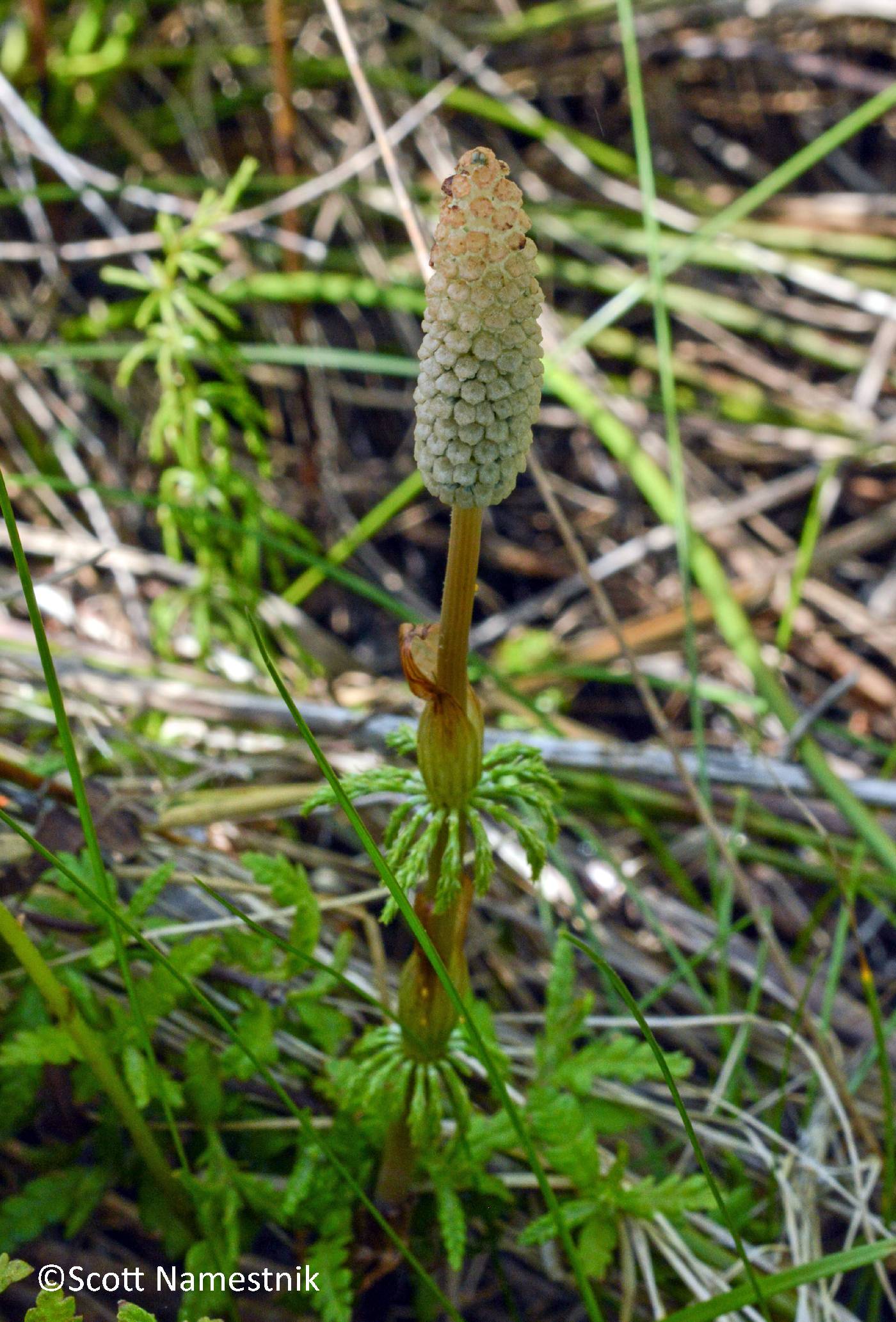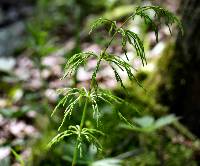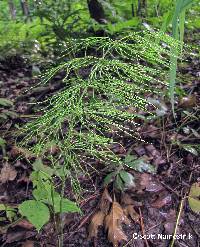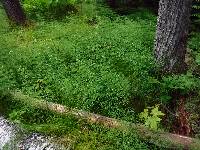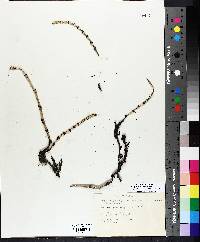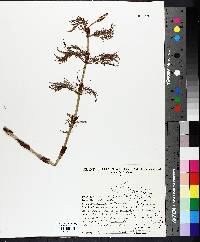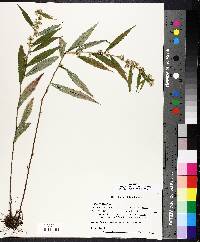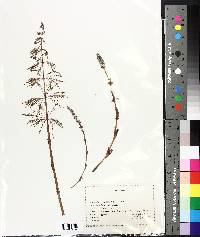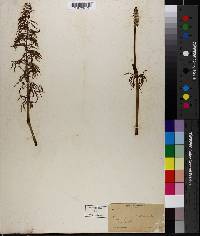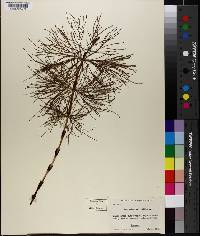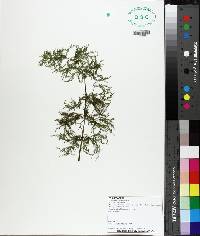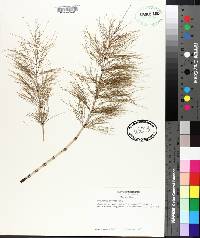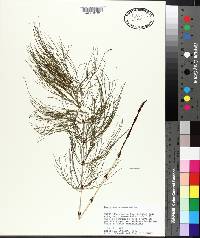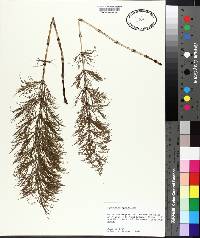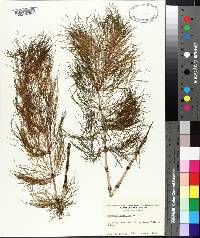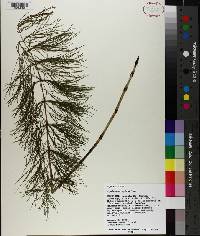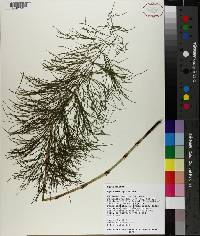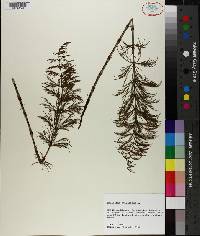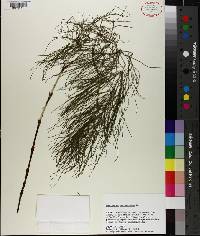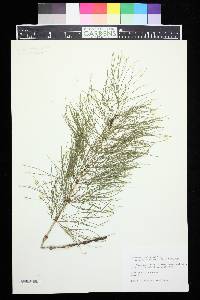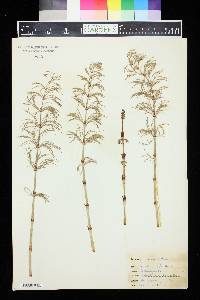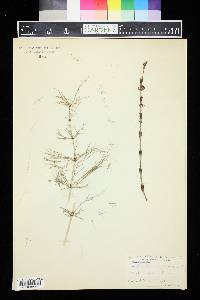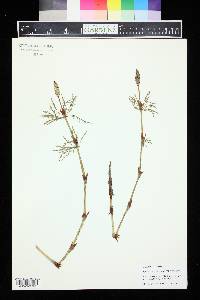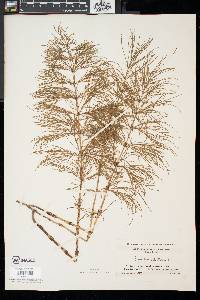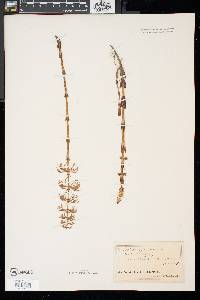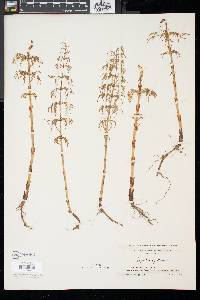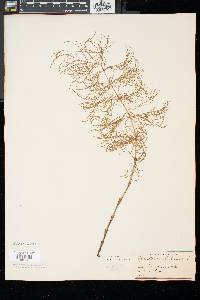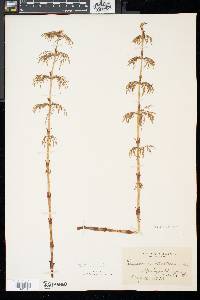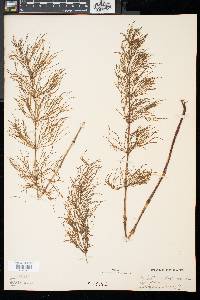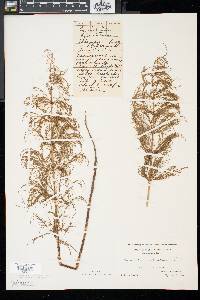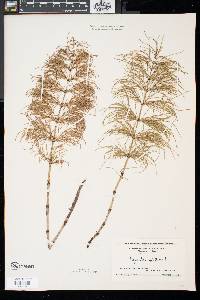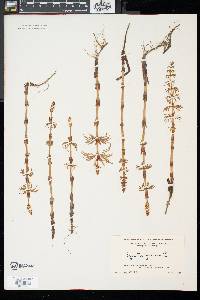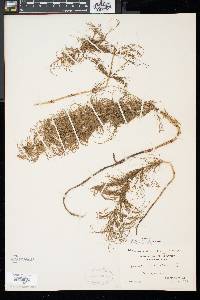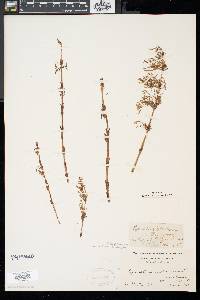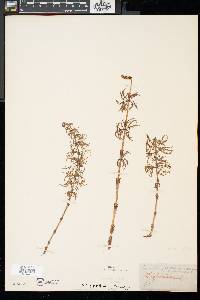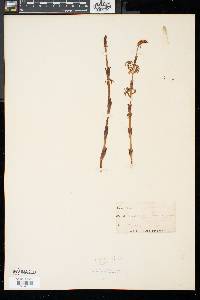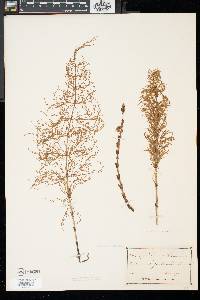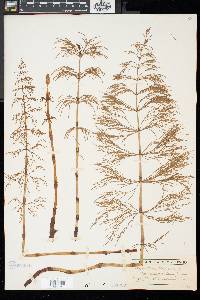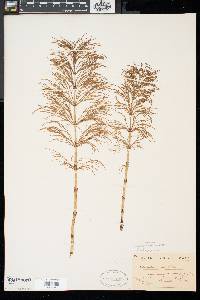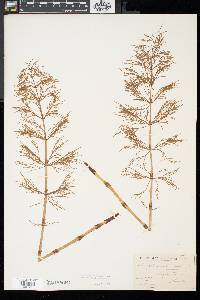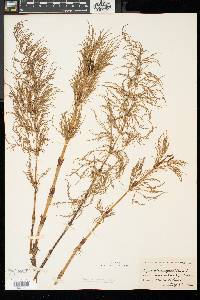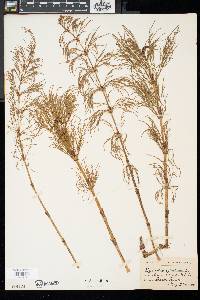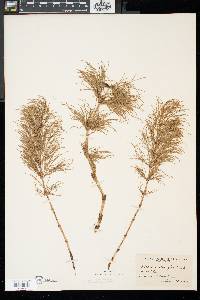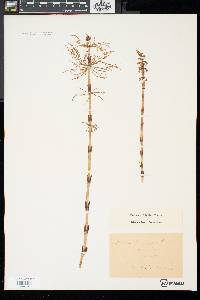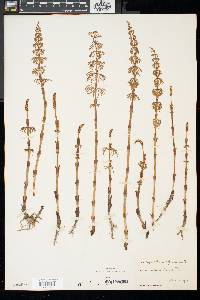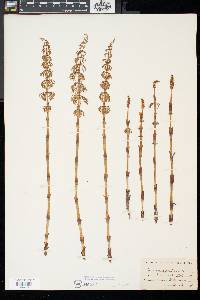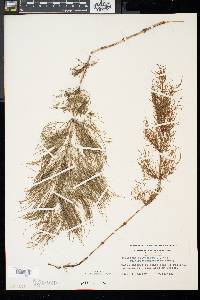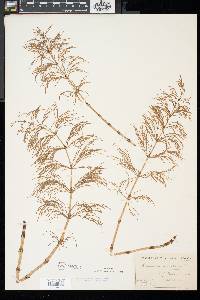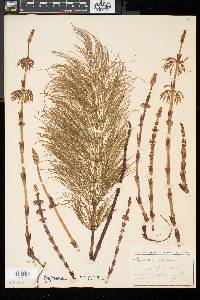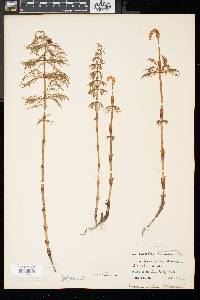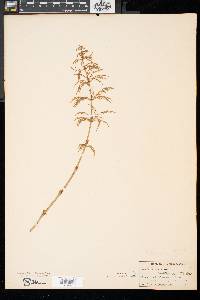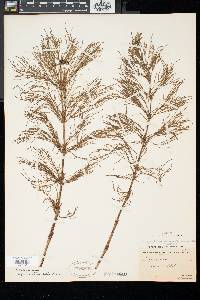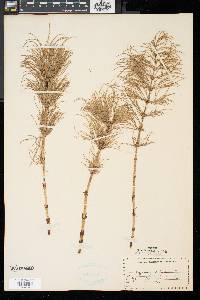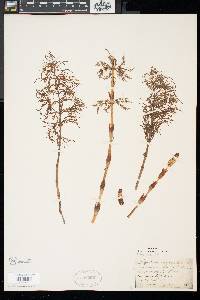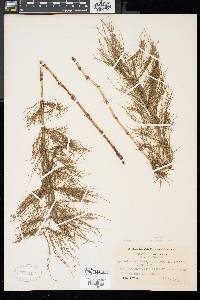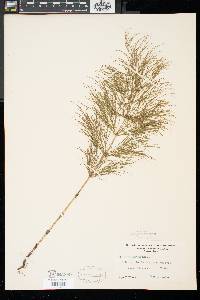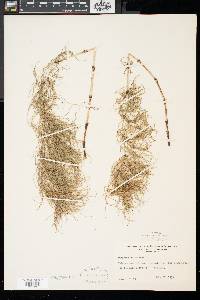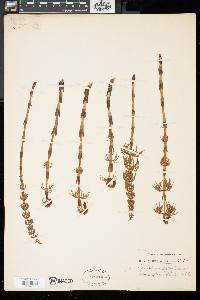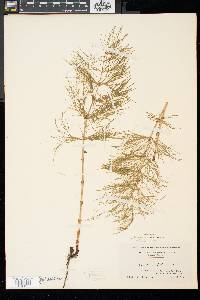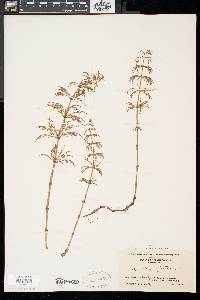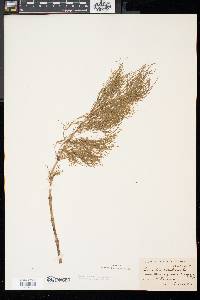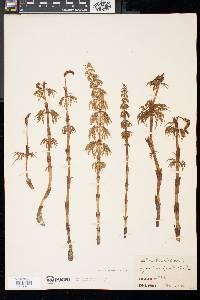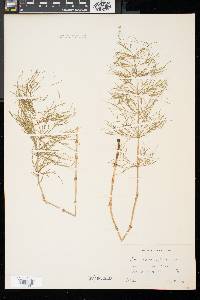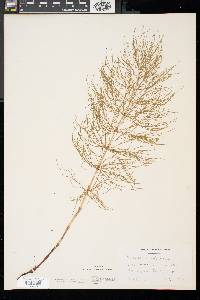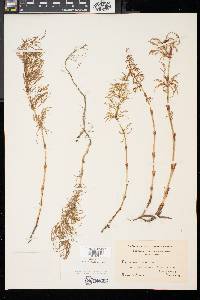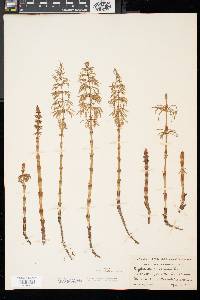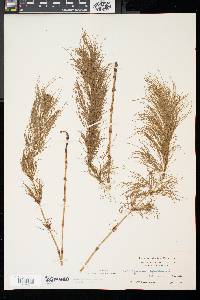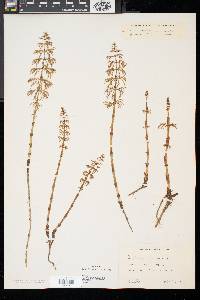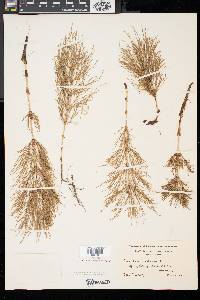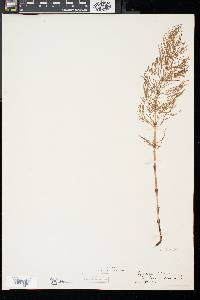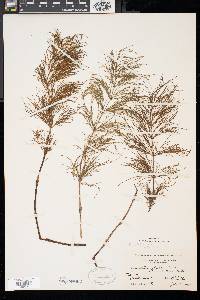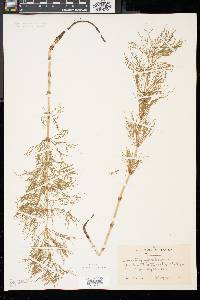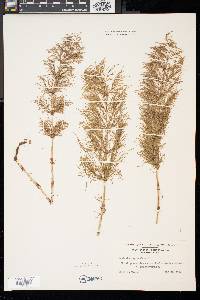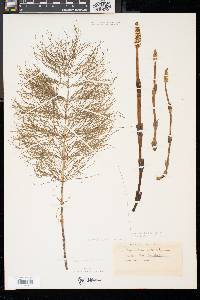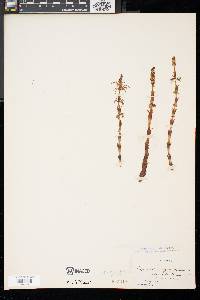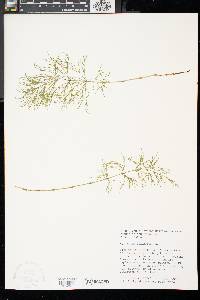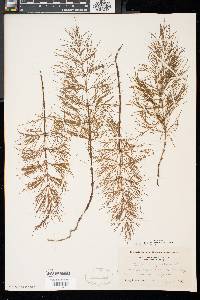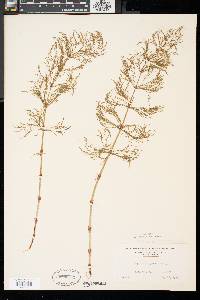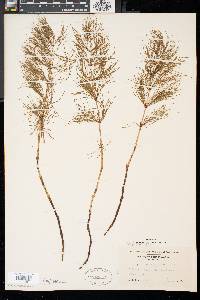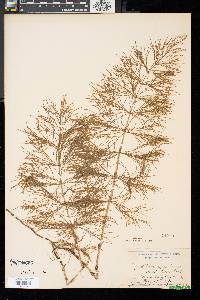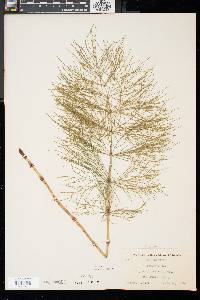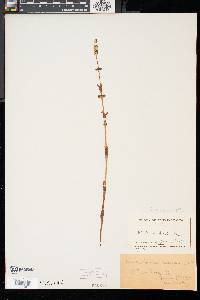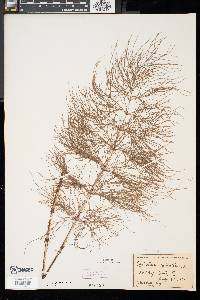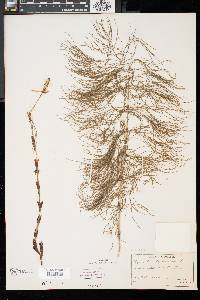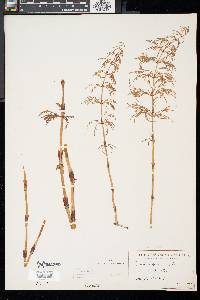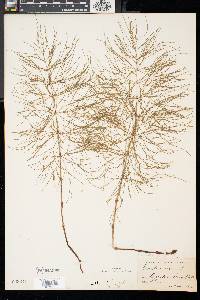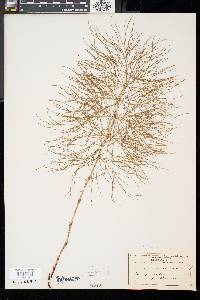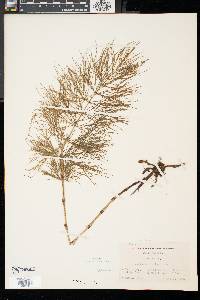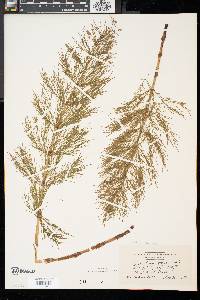Equisetum sylvaticum
|
|
|
|
Family: Equisetaceae
Woodland Horsetail
[Equisetum sylvaticum f. opsistachyum Lepage] |
Aerial stems dimorphic; vegetative stems brownish to green, branched, 25--70 cm; hollow center 1/6--1/3 stem diam. Sheaths squarish in face view, 3--6 × 2.5--6 mm; teeth reddish, 8--18, papery, 3--10 mm, coherent in 3--4 large groups. Branches in regular whorls, delicate, arching, branched, solid; ridges 3--4; valleys channeled; 1st internode of each branch longer than subtending stem sheath; sheath teeth attenuate. Fertile stems brown, with stomates, initially unbranched, persisting and becoming branched and green after spore discharge. 2 n =216. Cones maturing in late spring. Moist forests; 0--2800 m; Greenland; St. Pierre and Miquelon; Alta., B.C., Man., N.B., Nfld., N.W.T., N.S., Ont., P.E.I., Que., Sask., Yukon; Alaska, Conn., Del., Idaho, Iowa, Maine, Md., Mass., Mich., Minn., N.H., N.J., N.Y., N.Dak., Ohio, Pa., R.I., S.Dak., Vt., Va., Wash., W.Va., Wis.; Europe; n Asia to ne China, Japan in Hokkaido. Perennial herbaceous fern ally 25 - 70 cm tall Spores: green, spheric, 30 - 49 microns in diameter, and released from lengthwise slit in spore sacs (sporangia). Branches: only on vegetative stems, whorled, arched-spreading, further branched, delicate, distinctly jointed at sheathed nodes, rounded with solid center and three to four lengthwise ridges and alternating channeled valleys having stomates in a single line. The first internode of each branch is 5 - 9 mm long and longer than the subtending stem sheath from which it originates. Vegetative stems: one to several, branched, rough, brownish to green (dying back in winter), 1.5 - 3 mm diameter, round with hollow center and eight to eighteen lengthwise flat-topped ridges with two rows of rough (often becoming hooked and very pointy) silica bumps and alternating channeled valleys on outside. The stem joints have distinct nodes, and the stomates are never sunken. Sheaths: green with reddish tinge, square in face view, 3 - 6 mm long, 2.5 - 6 mm wide. The sheaths are actually small, fused, whorls of leaves. Sheath teeth: eight to eighteen, reddish, papery, narrow, 3 - 10 mm long, spreading, long-pointed, and united into three or four large groups. Similar species: Equisetum sylvaticum is most similar to E. arvense or E. x litorale, but they both differ by having dark teeth on the stem sheaths and the teeth are not joined into three to four large groups. The unbranched fertile, cone-bearing stems of this species can be easily distinguished from other species of Equisetum in the this subgenus (as well as those of subgenus Hippochaete) because all of those species have green unbranched stems, and none will have reddish teeth on the stem sheaths. Habitat and ecology: Incredibly rare since the Chicago Region is somewhat south of its natural range with the only confirmed citation being from Racine County, Wisconsin. In other areas of North America this species is found in moist forests. Occurence in the Chicago region: native Notes: This plant has the aboveground stems surviving for only one year or even less. Overall E. sylvaticum has a very lacy appearance due to the delicate multi-branched branches. Author: The Field Museum Stems annual, dimorphic, the sterile ones 3-7 dm, 1.5-3 mm thick, mostly 10-18-ridged, each ridge with 2 rows of sharp hooked spinules, the stomates in 2 bands in the furrows, the central cavity larger than the vallecular ones and most more than half the diameter of the stem, the sheaths 1-2 cm, basally green, distally brown, with persistent, irregularly connate brown teeth; branches regularly whorled, solid, 4-5-angled, commonly again branched; the first internode commonly longer than the associated sheath of the main stem; fertile stems subprecocious, at first simple and pale, later producing whorls of green, mostly compound branches and often themselves becoming green; cones long-peduncled, 1.5-3 cm, deciduous, not apiculate. Cool moist woods; circumboreal, in Amer. s. to Md., W.Va., Ky., and Io. Gleason, Henry A. & Cronquist, Arthur J. 1991. Manual of vascular plants of northeastern United States and adjacent Canada. lxxv + 910 pp. ©The New York Botanical Garden. All rights reserved. Used by permission. From Flora of Indiana (1940) by Charles C. Deam Indiana Coefficient of Conservatism: C =10 Wetland Indicator Status: FACW |

